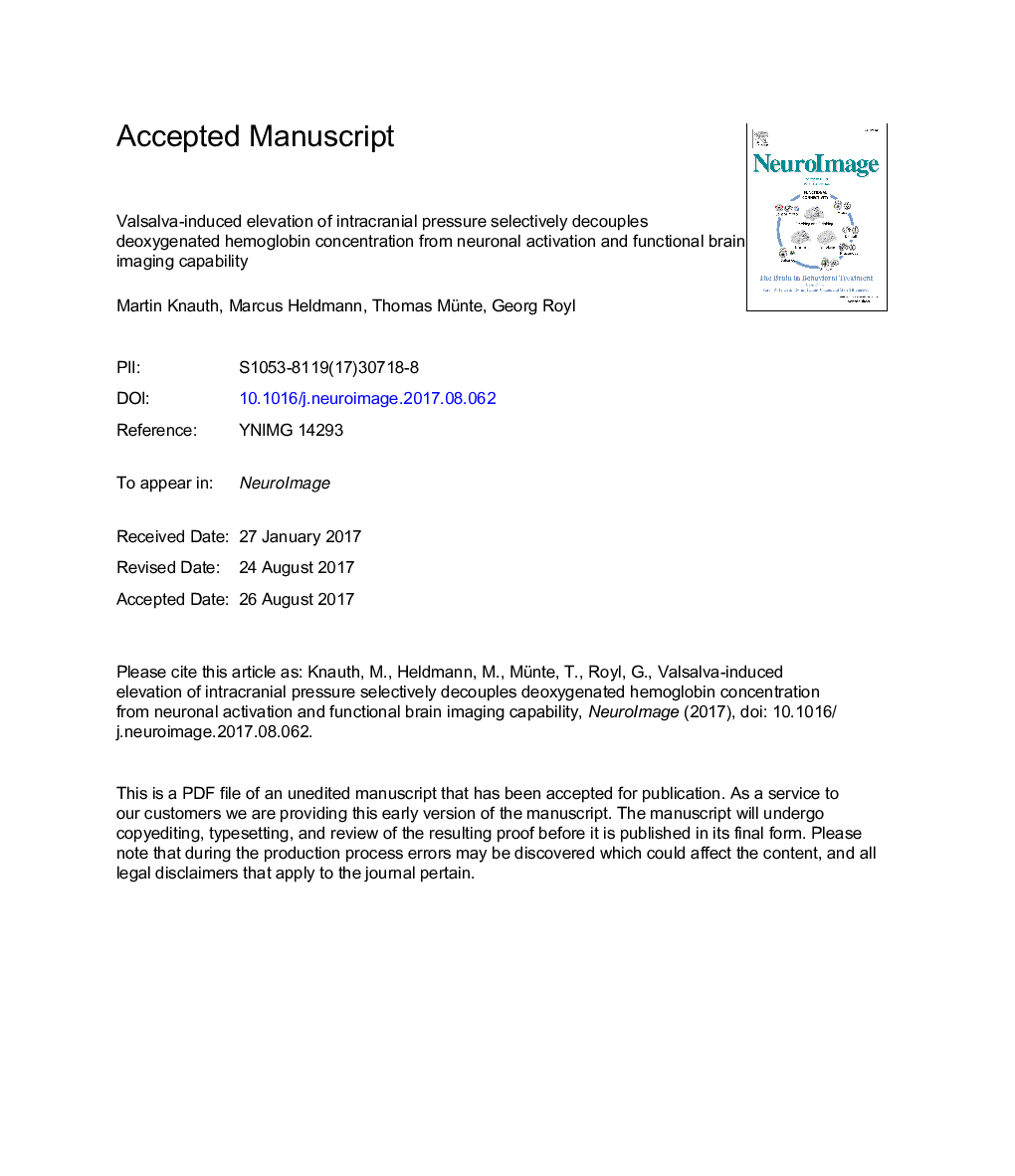| Article ID | Journal | Published Year | Pages | File Type |
|---|---|---|---|---|
| 5630760 | NeuroImage | 2017 | 34 Pages |
Abstract
During neuronal activation, neurovascular coupling leads to a local decrease of deoxygenated hemoglobin concentration (deoxy-Hb) and thus forms the basis of many functional brain mapping methods. In animals, an elevated intracranial pressure (ICP) can attenuate or even reverse this deoxy-Hb signaling. To study the effect of an elevated ICP on functional brain imaging in humans, we used different breathing tasks to modify ICP and analyzed the resulting effect on neurovascular coupling in the motor cortex. Functional near-infrared spectroscopy (fNIRS) was performed on 45 subjects during alternating conditions of finger tapping and resting state combined with four different breathing maneuvers (normal breathing (NB), breath holding without Valsalva maneuver (BH), Valsalva maneuver with 15Â mm Hg forced expiratory pressure against resistance (V15) and Valsalva maneuver with 35Â mm Hg forced expiratory pressure against resistance (V35)) in randomized order. With escalation of breathing tasks the median amplitude of the functional deoxy-Hb decrease during finger tapping became smaller. In contrast, functional oxygenated hemoglobin concentration (oxy-Hb) and total hemoglobin concentration (total-Hb) responses did not show a significant alteration. The functional oxy-Hb map evoked by finger tapping withstood Valsalva challenges while the functional deoxy-Hb map identified the correct motor cortex in normal breathing conditions only and did not reveal a functional contrast during Valsalva maneuvers. In summary, we conclude that during ICP elevation, deoxy-Hb is not a reliable basis for functional brain imaging. This suggests that the validity of BOLD fMRI during increased ICP might be impaired.
Keywords
Related Topics
Life Sciences
Neuroscience
Cognitive Neuroscience
Authors
Martin Knauth, Marcus Heldmann, Thomas F. Münte, Georg Royl,
